Jumping Out of the Fire With Westlake Royal Roofing Solutions - PODCAST TRANSCRIPTION
October 5, 2023 at 2:00 p.m.Editor's note: The following is the transcript of a live interview with Robin Anderson from Westlake Royal Roofing Solutions. You can read the interview below or listen to the podcast.
Megan Ellsworth: Hello everyone. My name is Megan Ellsworth.
Lauren White: And I'm Lauren White.
Megan Ellsworth: And this is the AskARoofer Podcast. We're super excited to be back with Robin Anderson from Westlake Royal Roofing Solutions. Hi Robin, how are you doing?
Robin Anderson: Doing great. Thanks [inaudible 00:00:15].
Megan Ellsworth: Super excited to be chatting about this topic because it is so important. Wildfires, we've seen them a ton last year, even some this year. So I'm excited to hear everything you guys are doing and everything you provide. So let's just dive right in and have you introduce yourself, Robin. Then we'll get to the meat of the wildfire problem here.
Robin Anderson: Perfect. Yeah. So I'm Robin Anderson, I am the technical and strategy development manager for Westlake Royal Roofing Solutions, which basically means that I work with our products to make sure that what we make, we can sell and how we sell it.
Megan Ellsworth: Nice. Love it.
Lauren White: Great. So okay, let's start kind of from the beginning and can you tell us what is Class A fire resistance? What does that mean?
Robin Anderson: So Class A fire resistance really talks about the ability of the roof system to protect a structure. So a lot of people look at it as, how fire resistant or ember resistant or flame strength a roofing product has. So we go through a testing procedure that's set forth by industry standards that talk about flame resistance. So there's actually three parts to a Class A system that you get tested. And so, you have flame resistance of an intermittent flame, so it's on and off flames for 90 minutes and how well does the product perform.
And then it also does flame spread. So is the product, the roof covering itself flammable? So again, it tests under a direct flame for 30 minutes, how far does it burn up of the roof? And then the third part is a burning brand test, which is actually a stack of wood put together, lit on fire and stuck on your roof with a 13-mile-an-hour wind behind it, just to see if there's any way that those embers can enter the system to ignite the decking. So you can achieve three different levels of protection, Class A being the highest, Class B, Class C, and then you can be unrated, which hopefully most people don't really feel like that's a comfortable thing to have an unrated fire system.
Megan Ellsworth: Yeah. So what kind of materials are you using to make a product become certified Class A fire resistant?
Robin Anderson: It's a great question because there's different approaches for different materials. So on the Westlake side of things, we have concrete roof tiles, which concrete's pretty non-flammable. Our clay tile is the same thing. It's a high fired ceramic. So again, it's not flammable. So it inhibits the spread of flame. And then another one of ours is our stone coated steel, which again, it's metal, it's steel, it takes a whole lot of temperature to actually melt or ignite any of those products. But then even to go beyond that, the system itself will use an underlayment to protect the next level protection. So depending upon what materials you use as your roof covering, you may use something else as the roofing underlayment.
Lauren White: So many different parts to it.
Robin Anderson: Yeah, definitely.
Lauren White: That's good though. That's what you want. Okay, so I feel like every wildfire season we hear about wildland-urban interface. So can you explain to us what that is and why homeowners should know about it?
Robin Anderson: So WUI, people bring down to the shortened form of it. It's really all about that interface where the wilderness and the urban environments come together. So there are areas where a home would back right up against a forest. Well, that's a WUI interface, but it can also fall into a neighborhood that's within a forest stated nature. So some of the towns themselves are within the boundaries of a WUI environment, and at that point that entire neighborhood is encompassed as a WUI or a wildfire urban interface.
Megan Ellsworth: So basically a homeowner should just know if they're in a WUI area and that way they can kind of protect themselves?
Robin Anderson: You would hope that the homeowner knows and understands that, but honestly, those lines tend to change at times depending upon what the county or a city dictates, because really push comes to shove, if somebody wanted to build an environment inside of New York Central Park that could be designated as a wilderness urban interface. So even in downtown New York City, it's possible depending upon what the city dictates.
Megan Ellsworth: Oh, okay. So kind of going off of that, if you are in a wildland-urban interface area like you are in the forest, what is defensible space and how can homeowners use it in their landscaping to help protect their homes from wildfires?
Robin Anderson: Yeah, that's one of the really difficult things when it comes to a homeowner, because me personally, I love trees. I love the shade of trees around my home. But the firefighters look at it as a completely different story. If you have a tree that's overhanging your roof and you're in a WUI region, well that's a true fire source that can really affect your home and conversely your neighbor's home, because that becomes a fire brand if it's too close to residences. So that's where the defensible space comes into play, is how do you keep the aesthetics that you want, but making sure that the home is safe. So a lot of the areas will actually say you really don't want anything closer than five feet to your home to defend the home from those outside influences. So that's your defensible spaces.
Lauren White: [inaudible 00:07:33] having almost like a buffer zone between your home.
Robin Anderson: Exactly.
Lauren White: So now that we've talked about defensible space, let's go back to the rooftop. What kinds of products do you recommend the most to homeowners or in terms of fire prevention and keeping their homes safer during wildfire season?
Robin Anderson: Yeah, and the great part of your change there is the safer.
Lauren White: Yes.
Robin Anderson: Because, there are a lot of things that you would think of that are very non-flammable that, "Hey, you know what, I've put this on my roof and I'm going to be great." Let's take our concrete tile, concrete in itself, it's not flammable. Good luck trying to find a hot enough source that's actually going to ignite concrete. It doesn't happen, but especially in a wildfire situation, there are outside influences more than just flame, which is the embers. So you have to work that system together. Can I prevent even the smallest little burning ember to get inside underneath a roof system that can then ignite the ignitable stuff.
So plywood, that's pretty flammable in its normal state. So you want to make sure that there's ways to prevent those smallest embers or the heat transfer. So you can get to a metal roof. Metal in itself is not necessarily flammable except at extreme temperatures, but it is very conductive of heat. So you actually need to also protect from that radiant heat igniting a flammable source as well. So that's where the system really works together. So at Westlake we have answers for the entire system. So for our steel, we have a specialized underlayment that blocks that radiant heat, so you can actually work the system to help protect against as much ignition as possible.
Lauren White: Wow, that's really interesting. That's good to know. Again, all of those parts working together as one system, and then I forget where I heard it, but can embers, even if there's not a wildfire directly in your area, embers can travel for how many miles.
Robin Anderson: There's actually studies the point between 3 to 10 miles that a hot ember can actually leap across those distances. And it really depends upon the actual environment, but 3 miles is not uncommon. You'll see in some of those crazy wildfire pictures that you have patches where, well, it started over here, then you've got forest that's not touched and then all of a sudden you've got another burning house a mile away and it's because of those embers traveling in the firestorm as they call it.
Megan Ellsworth: Yeah. So that's so important about having that fire resistant, like either concrete or metal or something, so the ember when it lands, it can't melt through and then ignite what's underneath.
Robin Anderson: Correct. Or even having a flammable substance as the roof covering can be a little questionable.
Megan Ellsworth: And that's so cool that you said you have that underlayment that goes with metal because it's so conductive. That's interesting. What products do you see contractors using the most in wildfire prone areas?
Robin Anderson: We're really promoting and hopefully it's being more and more widely accepted of that entire system.
Megan Ellsworth: Cool.
Robin Anderson: So when it comes down to the Westlake, [inaudible 00:11:41] talk about our stone coated steel. So again, we [inaudible 00:11:45] the steel, it's non-combustible, but we have an underlayment that we call solar skin blue, and that is actually a radiant barrier and an insulating blanket. So within the system we're preventing that heat from transferring to the combustible materials. Then on our concrete side, again, the concrete does its job, but the underlayment also has to have enough material there that it prevents the same ignition. And again, there we have our underlayments in our ply 40 material, that is a barrier to try to keep that material from igniting any deeper into the structure.
Lauren White: So what warranties does Westlake provide on some of your products that you've mentioned?
Robin Anderson: Well, we make the statement about our fire resistance. So on our stone coated steel, that's actually built right into our warranty that we talk about it being non-combustible. So it protects against that. So the warranties themselves do make the statements that when installed as the system we direct that has been tested, that has been through the Class A testing standard that it's at least it's going to resist as much as possible any fire to the structure. Can't say it's fireproof, because there's always somewhere somehow that an extreme fire condition, well, the roof can only do so much.
Megan Ellsworth: Yeah.
Lauren White: Yeah. And sorry, just to follow up on that, you mentioned the system itself. So the warranties apply to the whole roofing system, correct, from Westlake, not just certain parts of it?
Robin Anderson: We warranty the parts that we manufacture, so the roof covering is warrantied for manufacturing defects that would lead to these types of catastrophic failures.
Megan Ellsworth: Nice. Kind of follow up question, if a homeowner is in a wildfire prone area and it's also a very sunny area, maybe like Southern California and they want solar panels, how do they go about getting solar panels and not voiding any warranties?
Robin Anderson: It's a little bit of a tricky question there. Well, it's tricky in the answering. Again, mostly falls down to we do have systems that are in place that we provide that actually are designed with the roof covering to ensure that when it's done correctly, then that there's no effect to the warranties.
Megan Ellsworth: Nice. So they just need to find a good contractor that can put that high quality solar on and keep the roof intact and doing its thing.
Robin Anderson: Correct. And there are solar panels that also carry Class A ratings. So once the system is together, the entire structure can carry the same Class A rating for your fire resistance.
Megan Ellsworth: That's good.
Lauren White: Yeah. What other things should homeowners know about fire resistance, their homes, living in a wildlife prone area?
Robin Anderson: Great question, and it again comes down to knowing where you're at. I think that's one of the most critical parts to this, is if you as the homeowner or as the contractor installing on a given home in an area, if you know that that's prone to wildfires, or even if it's not classified within the WUI classification, knowing that in the first place is going to be the best defense, because then you can work with manufacturers, designers to get to a point that you want the best performing materials for that specific region. So at that point you get that opportunity to say, "Okay, well yes, I am in a WUI environment and I want my best fire classification." Then it gives you the great base point to say, "Okay, then I want this type of material, I want these types of systems."
Lauren White: I guess we didn't touch on this earlier. How do you know if you're in a WUI area? I mean, Megan and I both grew up in an area that was middle of the forest, so we knew that there was wildfire prone area, but how would a homeowner today find that out?
Robin Anderson: The easiest and most direct way is actually to go right to your municipality, and they will know for certainty, because there's some that you might have an outlier in a mountainous area, but down in the foothills it's not WUI. But once you move up to a point that may be in the trees, but it might not yet be, but you're close enough to the trees that they're going to designate that as a WUI environment. So the local municipalities are the best source to start with, because they can control to that address even what street or what side of which street is designated a WUI environment. I've actually been in those where across the street's not, but the house that we're working on is, because it's across the street that they designated as the boundary line.
Megan Ellsworth: Interesting.
Robin Anderson: Yes.
Megan Ellsworth: And I guess that's important to know too, if your neighbors across the street are in a WUI area, but you're not, you're close enough to where you still might want that class a fire resistance roof.
Robin Anderson: Right. Or work on your own defensible space to make sure that if they are and it gets ignited, well, you're going to protect yourself as much as possible. Correct.
Megan Ellsworth: Yes, exactly.
Lauren White: Yeah.
Megan Ellsworth: Well, thank you so much, Robin. I feel like I've learned so much, especially about defensible space and how to find the Class A fire-resistant materials and roofing products. Everyone should go to your directory on RoofersCoffeeShop and AskARoofer, the Westlake Royal Roofing Solutions directories on those sites to find out more. And you have a whole page on your website with fire-resistant materials, right?
Robin Anderson: Yes. We've actually gone right to the point of talking about what and where and how to get those defensible spaces, fire resistance and ember-resistant roofing. We've gotten quite extensive on our website to provide the homeowner and contractor pretty easy, quick references of what we specifically at Westlake are doing to help with those concerns.
Megan Ellsworth: Awesome. So if after this podcast you have more questions, reach out to Westlake and go to that webpage to see diagrams and graphs and all sorts of stuff that you can implement in your home and to keep you safe and keep your loved ones and family safe as well. So Robin, thank you again so much. This has been so informational.
Robin Anderson: Thanks for having me.
Lauren White: Thank you.
Megan Ellsworth: Thank you. And everyone listening, go to askaroofer.com to find out more, and we'll see you next time on the AskARoofer Podcast.




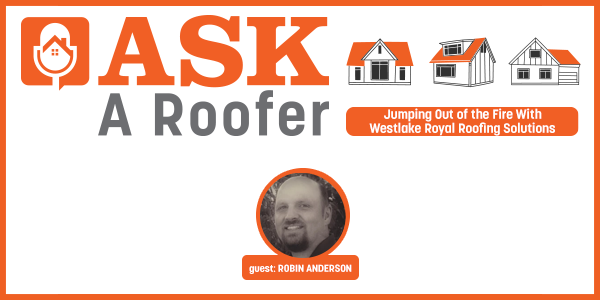
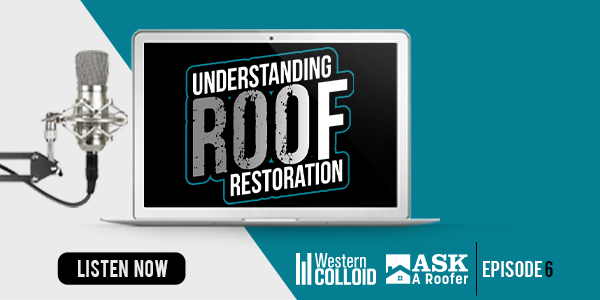
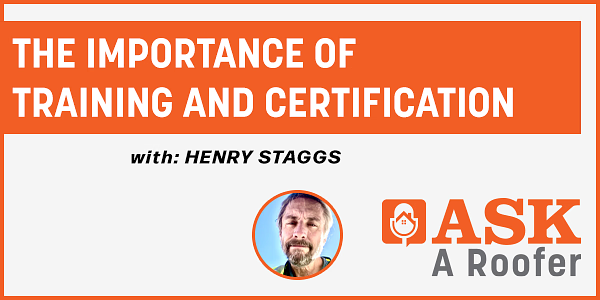
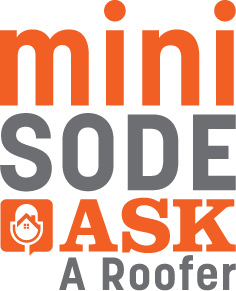



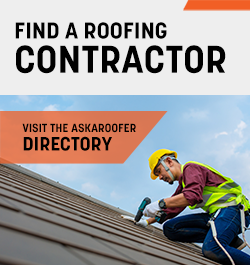
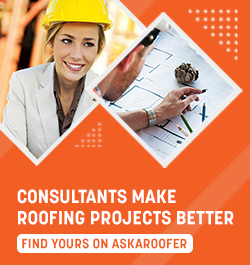

Comments
Leave a Reply
Have an account? Login to leave a comment!
Sign In